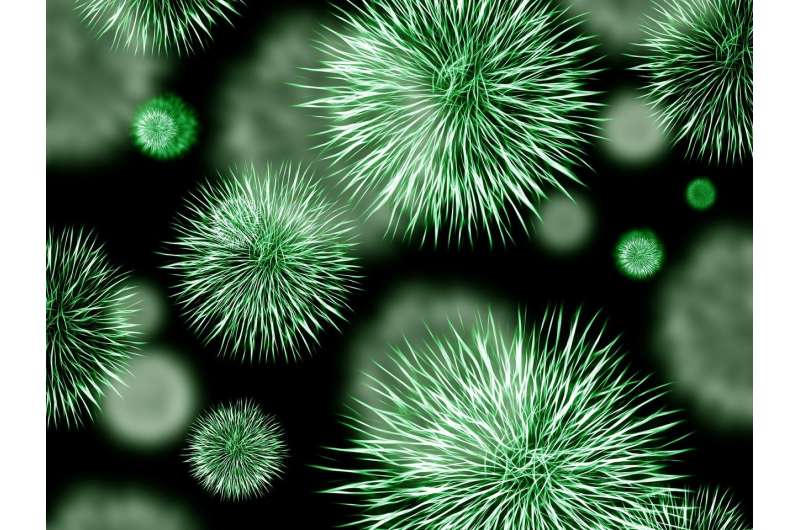Proposed simple chemical reaction network of existing biological E. coli signaling data

Bacteria have been found to exhibit a behaviour characterized by statistics and can be described by power-law distributions. For example, E. coli bacteria have an appendage called a flagellum, an appendage that works as a screw-propeller of the cell, which rotates at intrinsically random time intervals distributed according to a power law. What is so special in the power-law distributions and the ability of bacteria to produce them?
While most random events can be described by well-known exponential or Gaussian distributions, some are not. Distribution of wealth, the number of contacts in a social network, or the number of scientific paper citations are just a few examples that may be well approximated by power-law distributions. One particular area that links power-law statistics and bacteria is foraging and random search. It appears that in some cases, searching for randomly distributed rare targets such as food or a mating partner may be more efficient if the lengths of the steps made by the searcher exhibit power-law distribution. And indeed, such statistics have been experimentally observed in living organisms varying in scales from single immune cells to humans and sharks. However, the question of how living organisms can generate this behaviour remains largely unanswered.
Professor Mikhail Ivanchenko, head of the Department of Applied Mathematics at the UNN Institute of Information Technologies, Mathematics and Mechanics, led a new study published in the Journal of Physics A: Mathematical and General , which suggests that bacteria are naturally able to generate power-law distributions in the rotation intervals of the flagellar molecular motor by using their internal molecular reaction networks.
Interestingly, power laws appear naturally due to the finite number of fluctuations of reacting protein molecules, a condition common to the intracellular chemistry. When all flagellar motors of E.coli rotate in one direction, the cell swims almost in a straight line. Switching of the rotation direction of one of the motors reorients the cell in a new random direction, and thus creates a random searcher. The potential ability of a single motor to operate in a power-law regime may make the cell more capable of solving searching tasks.
"Researchers from the Lobachevsky University of Nizhny Novgorod, Max Planck Institute for Physics of Complex Systems (Dresden) and University of Augsburg, have proposed a simple chemical reaction network based on the existing biological data on E.coli signaling pathway, which yields power-law statistics with tunable exponents," Mikhail Ivanchenko says.
The exponents are controlled by a few parameters of the reaction network, such as equilibrium number of molecules, sensitivities, and the characteristic relaxation time. This might be one of the first examples in which the understanding of the origins of power-law statistics can be linked to a concrete biological counterpart and distinct physical mechanisms in a living organism.
Provided by Lobachevsky University




















